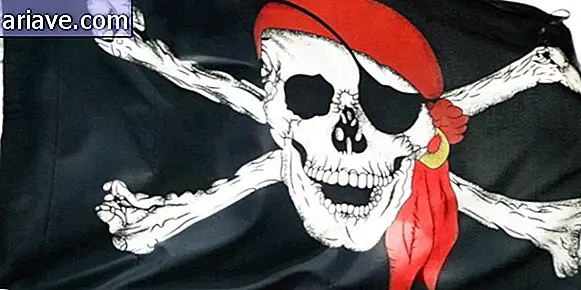Place your bets! Who is the best player: Pele, Messi or Maradona?
It seems impossible to make an objective comparison between Messi, Maradona and Pelé, three of the greatest football stars of all time, right? After all, we are talking about stars who have shone - or continue to shine - in different eras, during which the style, strategies, training routine, rules, and spirit of the game have all changed dramatically.
In addition, Maradona and Pelé have pursued very different careers, and Messi, as you know, continues to actively score goals and amaze football fans. However, Benjamin Morris of the Five Thirty Eight portal has decided to use math to establish which of the three athletes deserves the title of “best in the world, ” and below you can see what conclusion he has reached. But before you start ... have you ever placed your bet?
Statistical analysis

To perform the calculations, Benjamin used information from Opta, a company that specializes in sports analysis. This company compiled detailed World Cup match data from 1966 onwards, meaning that all appearances of Maradona - 21 in total - were included, as well as eight from Pelé. In fact, despite the Brazilian having participated and scoring goals In the 58 and 62 crowns, there was not enough information to include them.
For Messi, Benjamin considered the data - also provided by Opta - referring to the Argentine's appearances in cup games from 2006, as well as in qualifying matches, identifying these appearances as “ Messi-A ”.
In addition, Benjamin also contemplated Messi's appearances at Barcelona's UEFA games from the 2010-2011 season which, in his analysis, were called " Messi-B ". Other important information: Benjamin did not count any games Messi participated in during the 2014 World Cup, because the analysis was made before the World Cup in Brazil!
Numbers

Taking into account the absolute numbers of each player, ie their careers in their respective clubs, Benjamin found, for example, that Maradona scored a total of 346 goals in 679 appearances, while Messi scored 407 goals in 548 games.
Regarding Pelé's score, although the records prior to 1966 are less meticulous, it is known that the Brazilian - famous for scoring over a thousand goals by some historians - scored at least 757 goals in 812 official matches, which means that the King of Football scored more goals per game than Messi and Maradona.
Well, going back to the “international” numbers covered by the study in question, “Messi-B” fires on artillery, showing an enviable scoring scent. Pelé, on the other hand, is more effective when we add goals and assists according to the number of field appearances. Look:

That is, according to the table above, while Messi leads in scoring - by far! - statistically, the Brazilian had better performance per game than the two Argentines. But, it would be very annoying to stop the calculations here, wouldn't it?
More numbers

Benjamin also evaluated the players' performance against goal-kicks, counting in and out of the area, as well as penalty kicks. See the results:
Messi
In the image below we can see all the goals scored (indicated by the blue circles), the lost goals (in red) and those saved by the opposing defenders (the hollow balls) in Messi's games with the Argentine team (“Messi-A”)., in addition to the farthest kick, made 32.9 meters from goal.

The following image shows Messi's performance wearing Barcelona's jersey from the 2010-2011 UEFA season, and his farthest shot hit 30.2 meters. Check out the "Messi-B" data:

Maradona

The diagram above shows Maradona's performance during the time he played for the Argentina national team, between the 1982 and 1994 World Cups. His farthest shot was fired 30 meters from the goal and, if you look closely, You will notice that he was not very good with finishes from outside the area not!
Skin

Above, Pelé's performance between the 1966 and 1970 World Cups, and his farthest kick - launched at an impressive 70.4 meters away from the goal. Do you remember the famous saying “the goal that Pelé didn't make”? Yeah...
Nevertheless, unlike Maradona, Pelé risked very well from afar! On the other hand, although the Brazilian dared more with his outsides, he, like Maradona, did not score long-range goals very often, something Messi specializes in. See all this turned into numbers:

As you have seen, Messi (the "B") has the best overall performance, but probably because Pelé was not shy about putting his foot in the ball from afar. Now let's go to dribbles during heads-up play!

According to Benjamin, the table above shows that Maradona enjoyed dribbling his opponents even more than Messi, and did a little better in the plays. Pelé, on the other hand, performed almost as well as the Argentines, although he made far fewer attempts per game than the other two stars.
However, as Benjamin explained, during the Pelé and Maradona times, quarterbacks were not only more common but more likely to work, and this may reflect in the table results. According to him, at the UEFA games since 2010, there were about 18 attempts per match, with a success rate of 44.8%. At the time of Pelé and Maradona, this number was 21, with 49.4% of success.
Anyway, it is worth mentioning that the current quarterback is probably much more “robust” than in the past. And if we look at Messi's performance in the League, where his head-to-head success rate is 55.3% - up from 35.6% on average - this should be considered when interpreting the table numbers. Well, if you've seen him in the field, then you know what we're talking about! Now let's go to the data that speaks of each player's passes.
Passing the ball

Overall, Messi (“A” and “B”) not only makes more passes than Pelé and Maradona did, but also has a higher success rate in the moves. Also, in the “well done pass touches” section, we see which of the three players created situations that allowed their teams to keep possession of the ball longer, and here, too, Messi takes the lead. And speaking of ball possession ...
It's mine!

To determine the individual performance - not the team - of the three stars with respect to possession, each time one of them lost the ball, Benjamin considered three scenarios: ball loss, being "stolen" by another player during a dribble, wrong pass or that has resulted in a missed move; missed kicks or chances, either by the player himself or the teammate to whom he passed the ball; and successful goals and passes .

As you saw, Pelé was the best performer, producing the most goals per ball possession, followed by Messi and Maradona. In addition, the Brazilian was also more efficient at dominating and creating moves than losing possession - which probably also resulted in side benefits for the team, as wrong passes can lead to corner kicks and counterattacks by the team. opponents, for example.
Switching on kids

Statistically speaking, Pelé takes the lead when it comes to the goal and assist ratio, both for play and possession. In addition, the numbers show that while he missed more kicks or opportunities, he lost the ball to his opponents less often. Pelé also faced fewer defenders than the Argentines, but was equally successful in these moves.
Regarding ball passes (“ordinary” passes, not assists), Pelé is a little behind Messi - but not much! -, and with regard to shots on goal, although the hit rate is similar to “Messi-A” and slightly lower than “Messi-B”, the lower performance is due to the Brazilian risking kicks. from outside the area twice as often as the Argentine.
What's more, considering the data Benjamin used in this analysis, Pelé was as good as Messi in long-range kicks, and considerably better in "shots" from within the area.
Comparing different ages

Benjamin made a point of clarifying a number of questions concerning his calculations, such as the fact that he is not a fan of the idea of making comparisons between athletes of different eras. He said - and as we mentioned at the beginning of the story - a lot has changed in the sports world over the decades, and today's stars are likely to slay past heroes in most ways.

Thus, to make this comparison possible, Benjamin considered that (1) when a modern athlete's performance is much more dominant than in the past, it means that the current player is almost certainly the best. However, (2) if the performance of the modern player is only slightly more dominant than the former, we can assume that the current sportsman is probably the best.

On the other hand, (3) if the incumbent had a much more dominant performance than the current athlete, then there is a chance he would be better. And (4) if the performance of the old star is just better than the current footballer, we cannot draw any conclusions from this! With these issues explained, Benjamin concluded that Messi x Maradona fit the first two options more, while Messi x Pelé more closely matches the last two.
Conclusions

Before you go out celebrating Pelé's "statistical victory" over the Argentines, Benjamin explains that the analysis doesn't prove that either of the three players was better than the other two. This is because, besides the historical issues involved in the comparison, the sample considered - especially Pelé, with only 8 games - is very small.

However, if we leave these points aside and consider the data at hand, we can conclude that Messi is better than Maradona, as he consistently outperforms - and with a considerable margin - in virtually every aspect analyzed. . This is what Messi plays in a more technically and strategically strong era than Dieguito .
On the other hand, when we put Messi and Pelé side by side, as incredible as the Argentinean numbers are, the Brazilian data match or stand out across all indices - especially in terms of effectiveness in collaborating with the creation of plays that ended in goals or at least endangered the opposing goal.
With this in mind, if Messi is more of a player than Maradona, the same cannot be said for Pelé's comparisons. In short: either according to the testimonials of those who had the pleasure of seeing the three on the pitch or following the numbers cited. In the analysis, if we bring all this to the tip of the pencil, Pelé, the King of Football, still owns the throne!











